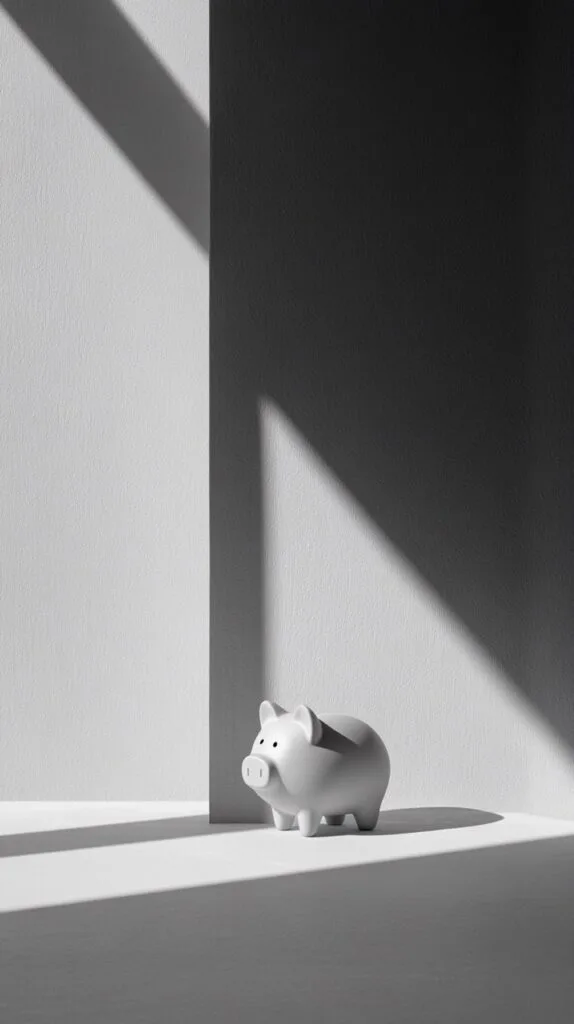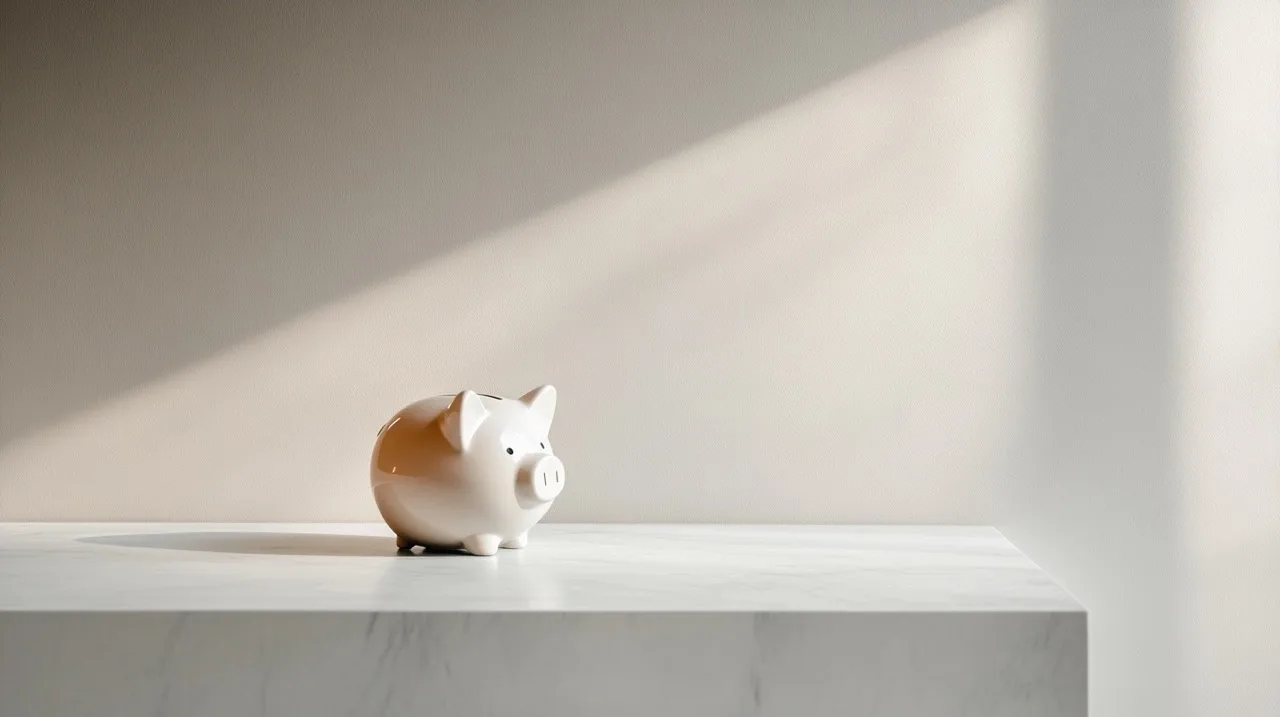I noticed something interesting when I first started organising my finances: I had a number of different credit cards, multiple savings accounts, and subscription services I barely used.
My money situation wasn’t bad per se; it was just unnecessarily complex, and I realised that becoming a financial minimalist could help, although I had no idea back then that’s how you’d call it.
The layers of complexity that had built up over the years made it harder to track spending and easier to lose sight of financial goals. A bit of minimalist money management changed this for me.
Table of Contents
Benefits of Simplified Money Management
Streamlining your financials gives you a clearer understanding of genuine value. Think of it as applying two basic principles to your finances: keeping what serves a purpose and removing what doesn’t.
This strategy doesn’t mean living cheaply or giving up things you enjoy. It’s more about creating clarity in your financial life so you can make better decisions towards your financial goals and where your money goes. In my case it was adopting a more minimalist mindset towards spending.
For instance, when I downsized my accounts and created a simple system for tracking expenses, I found I had more money to save and invest. Not because I was earning more, but simply because I could finally see and control my spending patterns.
The beauty of financial minimalism lies in its flexibility. You don’t need to follow rigid rules or completely overhaul your lifestyle overnight. Small steps toward simplifying your money management can lead to notable improvements in your financial health.
I dare say making these changes progressively instead of all at once gives them a better chance for your new habits to stick.
Taking a Minimalist Approach to Finance

Moving beyond the common notion that budgeting is just about restricting spending, a financial minimalist lifestyle tends to focus on alignment. In other words, you’re making sure your money serves your priorities.
Traditional budgeting often feels like a game of numbers, tracking every pound or dollar across dozens of categories. While detailed tracking has its place, a minimalist approach strips away the complexity. Instead of maintaining elaborate spreadsheets and multiple accounts, you might keep one current account, one savings account, and a straightforward system for essential expenses.
Conscious spending is the name of the game. Rather than following rigid rules about what you can or cannot buy, you gradually rewire your mind to pause and consider each purchase.
So you’re not agonising over every coffee purchase, just developing more of an intuitive understanding of your personal spending patterns and their impact on your financial goals.
For example, when I simplified my banking structure, I noticed I was paying maintenance fees on accounts I rarely used. By consolidating these accounts, I not only saved money in bank fees, but also gained a clearer picture of my finances. This clarity made it easier to spot unnecessary expenses and identify areas I could cut back in. Ultimately, I was also able to build a dedicated emergency fund more effectively because I was adopting this minimalist finance mindset.
Again, the key principle isn’t deprivation. It’s intention towards financial goals. By removing financial clutter, you create space to focus on what brings real value to your life, whether that’s investing in your home, saving for travel, or building long-term wealth.
How Minimalism Helps Your Financial Goals
After adopting a minimalist approach to money management, I noticed a marked reduction in financial stress, too. I had gained better control over the money that was coming in.
When you pare down your financial commitments, you naturally become more aware of your spending patterns and can save and invest more effectively. You might discover, as I did, that you’re paying for three different streaming services when you mainly watch just one. Or perhaps you’ll spot duplicate insurance coverage across different providers. These small overlaps can add up to significant amounts over time.
A simplified approach to money makes saving more straightforward. With fewer accounts to juggle and clearly defined priorities, you can automate your savings without second-guessing your system. I found that maintaining a single savings account with specific targets worked better than having multiple accounts for different goals.
The path to financial freedom becomes clearer when you’re not distracted by complex financial products. By focusing on fundamental aspects like building an emergency fund, reducing debt, and investing sensibly, you create a strong foundation for long-term financial health.
This simplicity extends to day-to-day money decisions as well. When you know exactly how much you have and where it needs to go, you spend less time worrying about money and more time focusing on what you want to achieve with it.
Steps Toward Financial Minimalism
Starting with a thorough review of your current finances might feel daunting, but it’s essential groundwork. Begin by listing every account, subscription, and regular payment.
In my case, this exercise revealed the aforementioned streaming services I had lost track of plus the unused accounts that were quietly draining some cash each month. Perhaps even more critically, it showed me exactly where I was dropping a heck of a lot of money, and how often: I was an absolute nut case in the fashion department.
Once you’ve quasi audited yourself, the next step is creating a pared-down budget that aligns with your values and supports a more minimalist approach.
Rather than tracking dozens of categories or spending money on things that don’t reflect your priorities, focus on the major areas: housing, utilities, food, transport, any big ticket categories like clothes shopping, and money to save and invest. Keeping your budget categories a bit broad helps maintain perspective while making it easier to track spending consistently.
I’d definitely also consider setting up automatic transfers for essential expenses and savings. This removes the need for constant decision-making about money movement. For instance, arranging for a portion of your income to go directly into a money market account every month helps you build your emergency fund without requiring all too much regular attention.

There are other opportunities to streamline your accounts, too. Most of us can manage effectively with:
- One current account for daily expenses
- One savings account for emergency funds
- One credit card for planned purchases
- One investment account for long-term growth
When reducing accounts, prioritise those offering the best value, be that through higher interest rates, lower fees, or better service. Pay particular attention to accounts charging maintenance fees or requiring minimum balances.
Beyond the mechanics of account management, zoom in on reducing regular expenses to improve your money situation. Review your monthly outgoings and question each one: Does this expense align with your goals? Could you find a more cost-effective alternative rather than spending money on unnecessary items? Sometimes, the best solution is simply to negotiate better rates with existing providers.
Creating a Minimalist Budget That Works
Living as a financial minimalist means building some sticky, practical habits that support your money management. Based on my own personal finance journey, there are three key practices that have the most impact on maintaining a streamlined money system to reach your financial goals.
First, regular budget reviews help you understand where your money goes and identify opportunities to save and invest. I check my spending a couple of times a month, which now only takes about ten minutes since I’ve simplified my accounts. This habit helps spot patterns and prevents impulse purchases from derailing my financial goals.
Second, make us of automation! Setting up direct debits for bills and automatic transfers to your savings account removes the temptation to spend money earmarked for essentials. Many minimalists aim to save 20% of their income, adjusting the figure based on their circumstances.
Finally, get on board with the practice of delayed purchasing as part of your journey to financial minimalism. When considering non-essential items, I wait at least 48 hours and oftentimes a whole month before buying. I basically park everything on wish lists first. This cooling-off period helps me distinguish between genuine needs and temporary wants (or Tiktok brainwashing, ha), thus preventing unnecessary spending and keeping credit card debt at bay.

Your Journey to Achieve Financial Freedom
Starting your financial minimalism journey doesn’t really require drastic changes. Begin by examining your current spending habits and identifying one area where you can scale back your expenditures.
Building strong financial habits does take a bit of time. I would always try to focus first on debt reduction and establishing your emergency fund—aim for three to six months of essential expenses. Once that’s in place, you can explore investing.
The goal isn’t perfection but progress. Each step toward simpler finances brings you closer to both financial security and less financial stress. Take that first step by choosing one area of your finances to simplify!
These principles work because they focus on maintaining financial clarity rather than imposing strict limitations.






















Leave a Reply